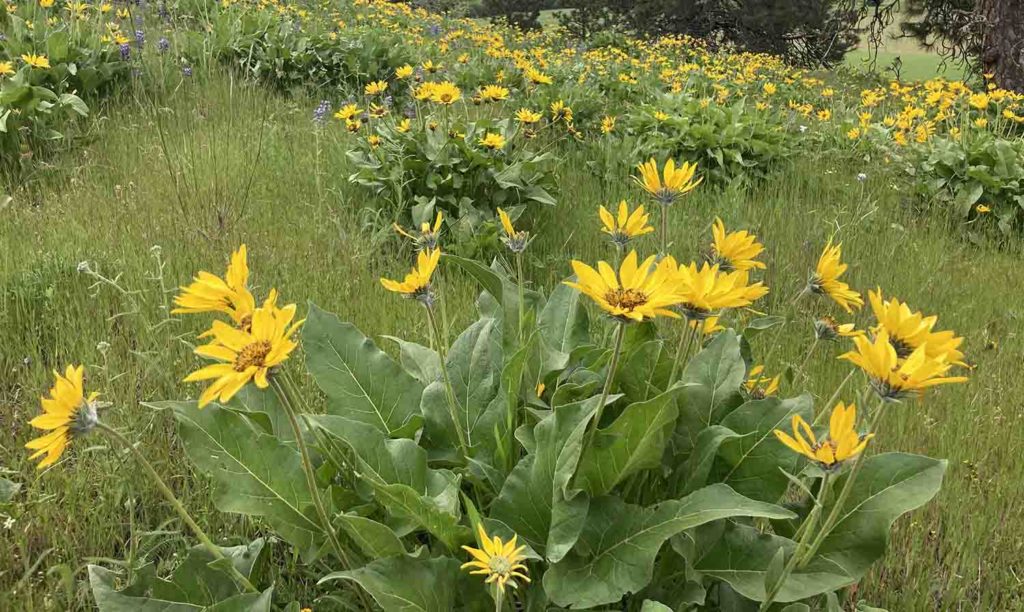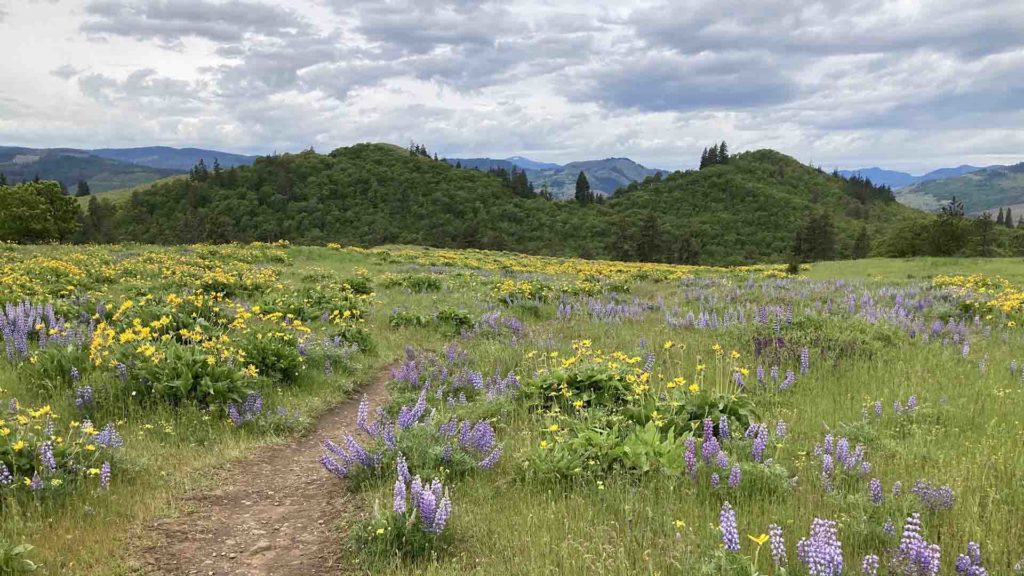Editor’s Note: This is part of a series of dispatches from the Knight Science Journalism Program’s 2021-22 Project Fellows.
On a recent Sunday morning, my family went hiking at a favorite spot in the Columbia River Gorge. It lies east of the Cascade Mountains, where the dense, wet forests of Douglas Fir give way to open meadows and stands of white oak. The area is known for its wildflower displays, and when we visited, the blooms did not disappoint. Arrowleaf balsamroot — also known as Oregon sunflower — grew in riotous yellow bouquets, and stalks of purple lupine stood almost as tall as my toddler, who stopped often to smell the flowers.
We had hiked here before, and it looked much the same as I remembered. But I saw the landscape differently this time.
As a Knight Science Journalism Project Fellow, I’ve been researching the world’s grassy ecosystems and the mounting threats they face. I’ve read countless textbooks and scientific papers about grass. In April and early May, I spent two weeks touring grasslands with researchers and conservationists, absorbing as much of their knowledge as I could. In the process, I gained what felt like a new superpower: the ability to understand grassy landscapes just by looking at them.
As we set off from the trailhead, the path wound through widely spaced oak trees that I once might have described as a woodland. Now, I understood that it was actually a savanna. The difference lay in the understory, which was full of sun-loving grasses and wildflowers, not shade-tolerant ferns and shrubs. In other words, this wasn’t an open forest; it was a tree-filled grassland. Historically, the landscape probably burned often, likely with help from native peoples. That wouldn’t have been a problem for large oaks with thick bark. But decades of fire exclusion had allowed scraggly young trees to start crowding the trail.
Next, we crossed a small stream and climbed a blossom-choked hill that offered a wide view of the surrounding countryside. A meadowlark sang as we ate snacks and surveyed the scenery. Immediately, I noticed that the wildflowers that grew in such abundance on the hilltop were nowhere to be found in the grasslands below. And I knew this was likely because those areas, which were flatter and more accessible, had probably been plowed or grazed — or both.
Indeed, after I got home and did some Googling, I confirmed that arrowleaf balsamroot — an edible plant used by tribes around the West — is like many other perennial grassland flowers; it has deep roots that can penetrate up to nine feet below the ground, which makes it extremely tolerant to disturbances like fire and moderate grazing. But it cannot handle heavy grazing and rarely recolonizes fields after they’ve been tilled.

We descended the other side of the hill through more oak savanna, and emerged onto one of the flowerless fields we had seen from above. Gone were the slender, ankle-high grasses of the wildflower meadows, replaced by a monoculture of thigh-high grass, thick and sturdy and crowned by wheat-like heads of seed. I wondered if this was a hayfield or an abandoned pasture.
A few months earlier, I might not have thought much of the change in vegetation, if I’d noticed it at all. For most of my life, grass was just grass. That Sunday, however, I understood that the boundary reflected some profound difference in the histories of these two neighboring plots of land, and what was lost when one turned into the other.
The field ended as abruptly as it began, and we crossed back into the short grass and wildflowers as we made our way back to the car. By now, I had come to suspect that we were in what one of my sources would call an “old-growth grassland” — a grassy ecosystem that has existed long enough to develop the same sort of complexity and diversity that we cherish in old-growth forests. I was exhilarated by the realization because it made this place feel even more special (old-growth grasslands are rapidly disappearing) and because I felt like my reporting had made visible a new layer of reality that I hadn’t been able to see before.
Learning to decode the natural world is a big part of the reason I studied geology as a student; I’ve always been fascinated by the stories etched into our surroundings, available to anyone who learns how to read them. Continuing this education has been one of the great joys of journalism. It’s also one of the reasons I write.
I want to help readers see landscapes not as the sets upon which we act out our lives, but as repositories of the natural and human histories that brought us to our present moment. That’s particularly true when it comes to grasslands, which are easily neglected and widely misunderstood. If we can learn to appreciate them, however, they have much to offer — and plenty to teach us.
Julia Rosen is an independent journalist covering science and the environment from Portland, Oregon. Her work has appeared in The Atlantic, The New York Times, Scientific American, and many other publications.





Leave a Reply